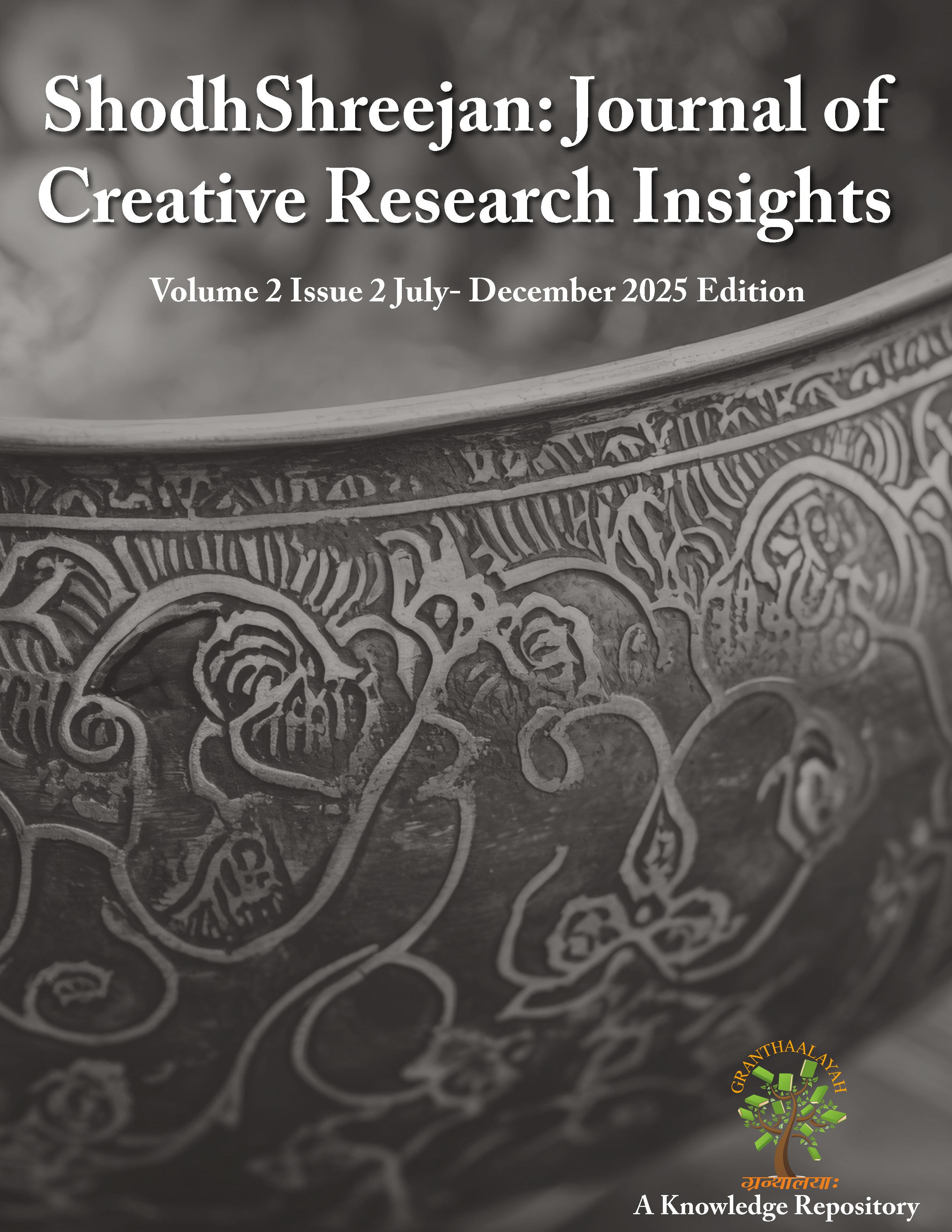FROM CLOSET TO STREAM: THE POLITICS OF QUEER REPRESENTATION IN POST-SECTION 377 INDIAN WEB SERIES
DOI:
https://doi.org/10.29121/shodhshreejan.v2.i2.2025.20Keywords:
Queer, Representation, Indian Web Series, Post-Section 377Abstract [English]
The decriminalization of homosexuality in India in 2018 marked a significant turning point in the legal recognition of LGBTQ+ rights. Since then, digital streaming platforms have become important spaces for the articulation of queer identities. This paper examines how queer representation in Indian web series has evolved in the post-Section 377 era. Using qualitative textual and discourse analysis, the study investigates five web series—Made in Heaven, His Storyy, Romil & Jugal, and Four More Shots Please! The analysis explores how these series portray queer characters, the role of intersectionality, and the implications of digital media as a site for both visibility and commodification. The findings reveal a complex landscape: while these platforms increase queer visibility and diversity, they also present tensions between authenticity and market-driven narratives. This research contributes to broader discussions about queer media, representation, and digital cultures in contemporary India.
References
ALTBalaji. (2016). Romil & Jugal [TV series]. ALTBalaji.
ALTBalaji. (2019). Four more shots please! [TV series]. Amazon Prime Video.
Baker, C., & Andrews, J. (2020). Reading between the lines: Media Representation of sexualities in South Asia. Oxford University Press.
Banaji, S. (2018). Children and Media in India: Narratives of Class, Agency and Social Change. Routledge.
Basu, P. (2021). Queer histories, Queer Futures: Sexualities in South Asia. Routledge.
Chakravarty, P. (2020). Queer Cinema and Postcolonial Critique in India: Intersections of Sexuality and Subalternity. Oxford University Press.
Chakravarty, P., & Reddy, S. (2021). Digital desires: Queer Narratives in Indian web series. Routledge.
Chaudhuri, M. (2020). The Politics of Desire: LGBTQ+ Narratives in Post-Section 377 web series. Media Watch, 11(3), 479–489. https://doi.org/10.15655/mw/2020/v11i3/204831
Crenshaw, K. (1989). Demarginalizing the Intersection of Race and Sex: A Black Feminist Critique of Antidiscrimination Doctrine, Feminist Theory, and Antiracist Politics. University of Chicago Legal Forum, 1989(1), 139–167.
Dutta, A., & Roy, R. (2014). Decolonizing trans/gender studies in South Asia. TSQ: Transgender Studies Quarterly, 1(3), 320–337. https://doi.org/10.1215/23289252-2685620
Ganguly, K. (2021). Neoliberalism and Queer Politics in India: From invisibility to respectability. Palgrave Macmillan.
Ghosh, S. (2016). Queer lives in Bollywood: Fragmented Subjectivities and Heteronormative desires. South Asian Popular Culture, 14(1–2), 23–36. https://doi.org/10.1080/14746689.2016.1206687
Jain, S. (2019). Caste, Class, and Sexuality in Contemporary Indian Cinema: Decoding the intersectional Politics. Sage Publications.
Mathur, A. (2019). Made in Heaven [TV series]. Amazon Prime Video.
Misra, S. (2021). His Storyy [TV series]. ALTBalaji/ZEE5.
Misri, D. (2022). Queer futures and Neoliberal Norms: Streaming Sexuality in Post-Colonial India. Journal of South Asian Film and Media, 13(1), 55–72. https://doi.org/10.1386/jsafm_00050_1
Nanda, S. (2021). Gender diversity in India: Transgender Rights and Activism. Sage Publications.
Narrain, A. (2020). Because I have a Voice: Queer Politics in India. Yoda Press.
Narrain, A., & Sharma, R. (2022). Queer narratives Beyond Urban Spaces: Rural Identities in Contemporary Indian Media. Journal of South Asian Cultural Studies, 17(2), 235–250. https://doi.org/10.1080/14746689.2022.2039013
Navtej Singh Johar v. Union of India, Writ Petition (Criminal) No. 76 of 2016 (Supreme Court of India, 2018).
Rao, S. (2021). The Aesthetics of Respectability: Queer Representation in Indian Streaming media. Journal of Media & Cultural Studies, 35(5), 614–628. https://doi.org/10.1080/10304312.2021.1931212
Sharma, G. (2020). Neoliberalism and Queer Subjectivities in Contemporary India. Oxford University Press.
Published
Issue
Section
License
Copyright (c) 2025 Dr. Manzoor Ahmad Najar

This work is licensed under a Creative Commons Attribution 4.0 International License.
With the licence CC-BY, authors retain the copyright, allowing anyone to download, reuse, re-print, modify, distribute, and/or copy their contribution. The work must be properly attributed to its author.
It is not necessary to ask for further permission from the author or journal board.
This journal provides immediate open access to its content on the principle that making research freely available to the public supports a greater global exchange of knowledge.



















